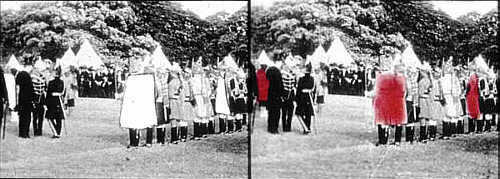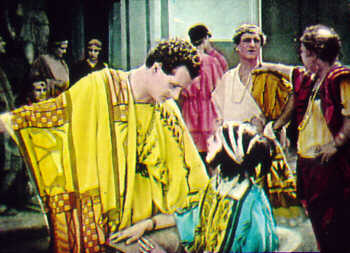


The above picture demonstrates how film makers "mass produced" hand colored films. The image at left is a print of the film with portions of the image cut out to use as a stencil for a print placed beneath it. A separate stencil film was used for each color that would be applied. Each and every frame had to be cut in this manner. It is obvious that the desire to place color in motion pictures was very strong indeed, for film makers to expend this much effort. This is an example of Pathé Color, dating from around 1905. Generally, a maximum of six different colors would be added to the black and white base print.

Hand coloring evolved to a fairly high level of sophistication, as can be seen in this frame from The Last Days of Pompeii produced in Italy in 1926. Hand coloring of films continued into the early 1930's, even while continually better methods of photographing in "natural" color developed.
Hand coloring was very labor intensive. As the popularity of the motion picture grew, hand coloring became increasingly more impractical when films got longer and the number of prints increased.
The term "natural color" was applied to any photographic system that derived it colors from the scene being photographed, rather than being added after photography. While many of the early color processes produced hues that were anything but natural, the term was still applied because the color was part of the photographic record.
